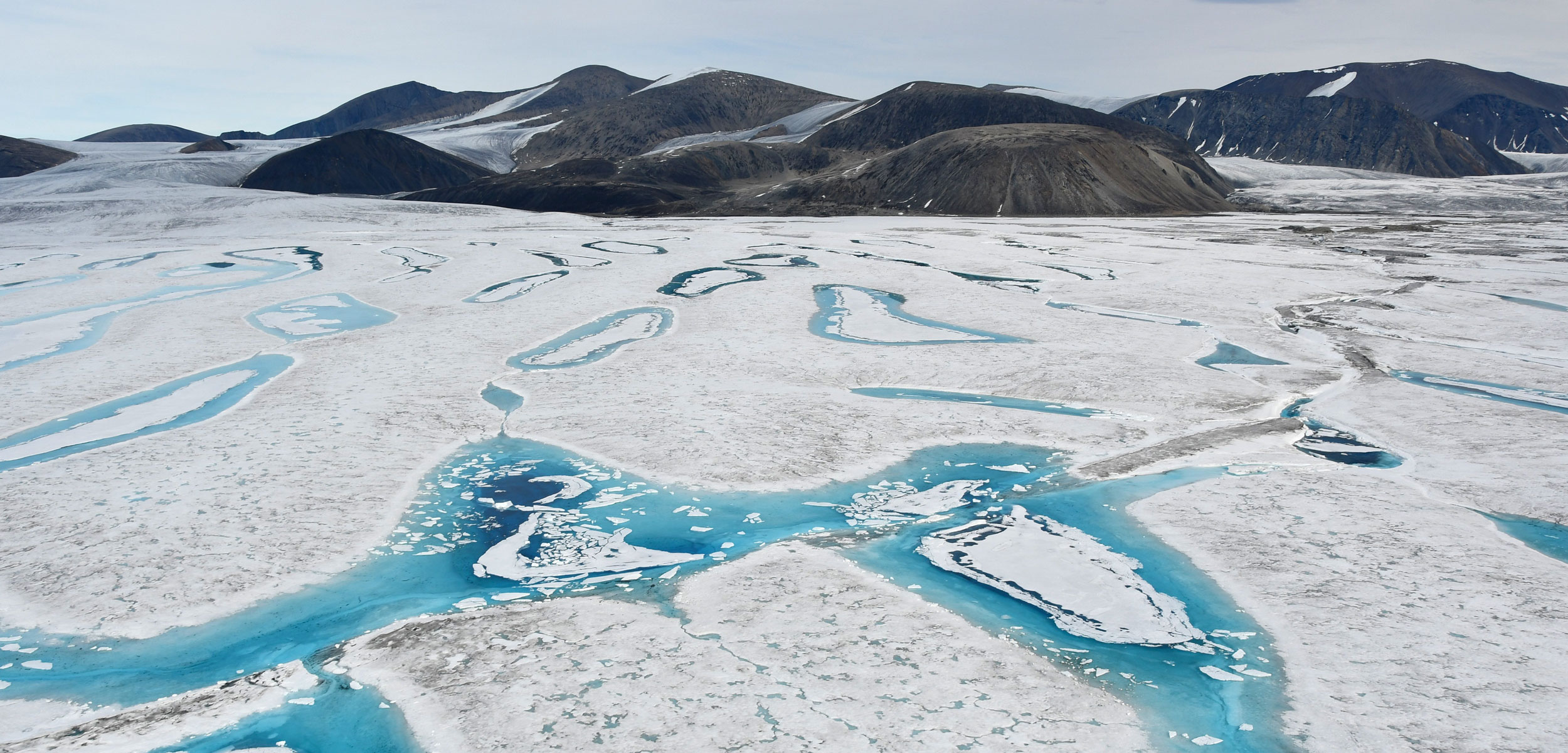Milne Ice Shelf Ecosystem, We Hardly Knew Ye
When the last of the Arctic’s ice shelves collapsed in early August, it took a newly discovered ecosystem with it.
Article body copy
The Milne Ice Shelf contained startling secrets that were just beginning to be discovered. In early August, the floating glacier, flowing out of the northern tip of the northernmost island in Canada, lost nearly half of its area in just two days, taking a recently discovered community of creatures with it.
The ice shelf held back the last epishelf lake in the northern hemisphere. That ecosystem—an isolated body of fresh water floating on top of the sea and trapped behind the ice—had been part of a long-term monitoring effort and may have survived the shelf’s collapse, although researchers won’t know for sure until next summer.
Another new habitat that had only just been found was even more tantalizing. But with the loss of the ice, the chance to learn more is gone forever.
“It’s a bit of a punch to the gut,” says Derek Mueller, an associate professor at Ontario’s Carleton University, who has over the course of his climate change research watched all six of Ellesmere Island’s ice shelves fall apart, one by one. The first, the Ward Hunt Ice Shelf, broke off in 2002.
Since 2015, Mueller’s team had been studying a long depression on top of the ice shelf. Using ground-penetrating radar, they discovered a kind of horizontal tube, or maybe a long ledge-like cave, open to the sea beneath—they’re still not sure of its actual size and shape.
In 2017, they dropped a toaster-sized remotely operated vehicle (ROV) down into the unknown through a hole they melted in the ice shelf.
The ROV came back with video of an unbelievable assortment of creatures living inside the chamber: soft corals, brittle stars, polychaete worms, sea anemones, hydroids, even an Arctic cod swimming above mud-flecked blue ice. All that life was found in just the 30 square meters they were able to explore. Other measurements showed fresh water was getting in somehow; likely, Muller says, fed by the enigmatic epishelf lake farther inland.
“We were doing fieldwork [on the Milne Ice Shelf] for so many years and had no idea we were standing on top of this channel full of all these creatures,” says Adrienne White, a scientist with the Canadian Ice Service who was not part of the research on the ice chamber.
The video made its way to ecologist Philippe Archambault, a professor at Quebec’s Laval University who studies the creatures of the Arctic seafloor. He had never seen anything like it. He was instantly brimming with questions: how long had these creatures been there? How did they get there? What were they eating? Could they come and go, or was it a closed ecosystem?
“The habitat by itself is so new, it was thrilling to have so many questions,” he says.
The video included images of scallops. Because of the way bivalve shells grow, like rings of a tree, they can be chemically mined for data. With just a few scallops, Archambault says, he could have begun to answer many of his questions.
Mueller’s team had secured an ROV with arms to collect samples for genetic and chemical testing. It would have been deployed this summer, but COVID-19 nixed the season. And then the ice shelf broke away.
Archambault didn’t hear about the ice shelf’s collapse until a week and a half after it happened. Returning from his vacation, he got the devastating news.
“I won’t tell you how I swear in French,” he says. It was as if he had discovered a whole new room in his house, only to have it demolished.
The lost season averted another potential disaster, however: had the team been on the ice when it calved, they would have been carried out to sea on an ice island larger than Manhattan, along with the CAN $90,000 in conductivity and water current monitoring equipment that was lost.
With the ice shelf’s collapse, the researchers are left with only the video as evidence the chamber and its life ever existed. The video alone could be enough to learn something new, but there are still ice shelves remaining in other parts of the Arctic and Antarctica, so, Archambault wonders, what if this life-filled cavern in the ice isn’t the only one?
“It’s easier to look for something that you know exists.”

